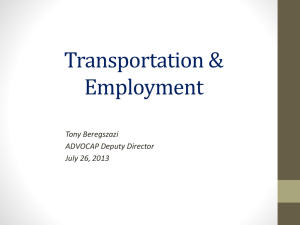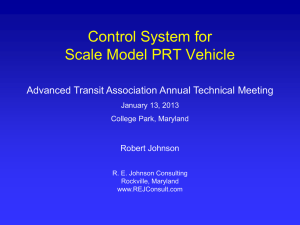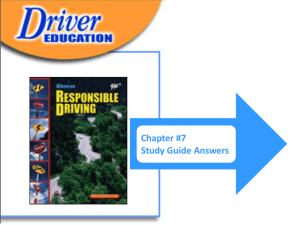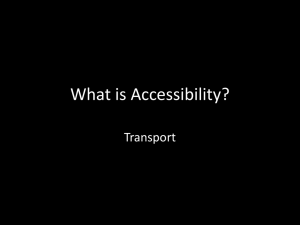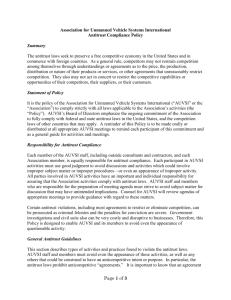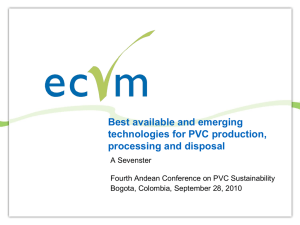Autonomous Underwater Vehicle (RoboSub)
advertisement
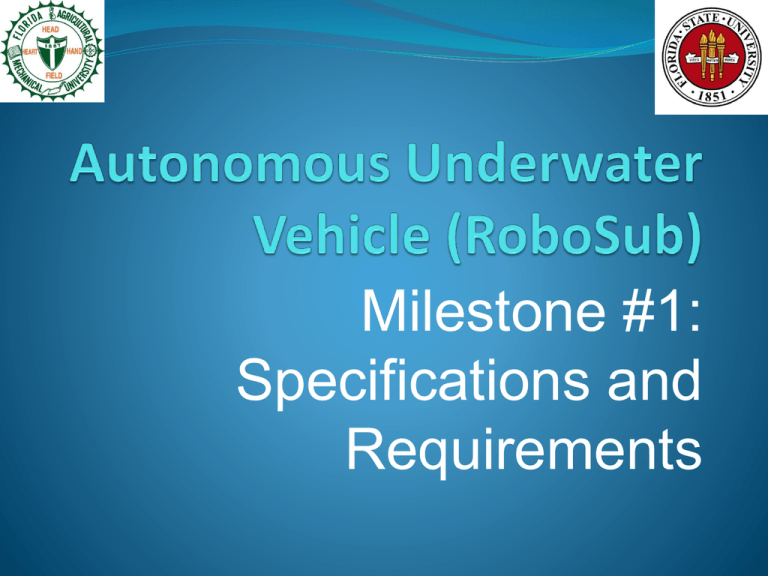
Milestone #1: Specifications and Requirements Overview of Design Team Goals Education Design and construction process Competition Teamwork Communication Interdisciplinary Team Computer and Electrical Engineering Mechanical Engineering Andy Jeanthenor Software Technical Lead Yanira Torres – Equipment/ Debug Technical Lead Tad Byrne– Mechanical Design Lead Victoria Jefferson – Project Manager (PM) Kevin Miles Electrical Lead Reece Spencer– Mechanical Technical Lead Objective/Theme Design, construct, and program a functional Autonomous Underwater Vehicle capable of all operational parameters in 10 months to win the AUVSI RoboSub Competition. The theme of last year’s competition was “Underwater the 13th”. Expected Results Create a vehicle which not only meets the design requirements, but does so in a way which is more precise and efficient than our competitors. Overview of the AUV Project The project is to design an autonomous "RoboSub" to be entered in the Autonomous Underwater Vehicle Competition sponsored by the Office of Naval Research (ONR) and the AUVSI organization. Existing Work/Prior Solutions University of Maryland: Tortuga III Cornell University: Tachyon :http://www.auvsifoundation.org/AUVSI/FOUNDATION/UploadedImages/UniversityOfMaryland_JournalPaper.pdf :http://www.auvsifoundation.org/AUVSI/FOUNDATION/UploadedImages/CUAUV2010JournalPaper.pdf Statement of the Problem Required Capabilities Vehicle must operate autonomously, no communication is permitted General water maneuverability; controllable by ARM microprocessor Abort mission override control to float vessel to surface in case of mechanical failure Kill switch and prop shrouds Obstacle Course (1 of 3) Buoy 1 (Green) Buoy 2 (Red) Next Slide Buoy 3 (Yellow) Given “PATH” created by 6” wide, 4’ long ORANGE PVC sheets Object 1: “Life Vest” Goal: Hit whichever two buoys are specified Object 2: “Hedge” Goal: Vehicle must pass between given risers. The lower it passes, the more points the team receives Obstacle Course (2 of 3) Next Slide Object 3: Weapons Goal: The vehicle must drop off two markers into two different specified bins. Each bin is “see through” and the top is open, each with a different weapon, which is how we will know which bin to drop the marker in. Each box is 24” x 12” x 6” Object 4: Window Pane Goal: Vehicle must “shoot” missile through correct window pane, specified by color. Each section is 24” x 24” Obstacle Course (3 of 3) 9 ft diameter orange PVC octagon (at surface). Object 5: Counselor Rescue Goal: Locate counselor from pinger on ground floor. Hoist counselor out of box, to the surface, within octagon at surface PVC Box (2 x 2 ft) holds “counselor”. Object must be hoisted out of box and rise to surface within octagon Bottom of pool Acoustic “pinger” to give location in pool. 0.5 Hz, 0.9s duration. 2s between each pulse Statement of the Problem Desired Capabilities Ability to read latitude and longitude and “lock on” to a specific direction (compass) Accelerometer (for stability control) Remote control capabilities for trial and test run error debugging. Data recording for testing and debugging purposes (hard drive) Inflatable bladder to float vehicle to surface Operational Description Inputs/Outputs Color Marker path Buoys Fire a torpedo Shape Deploy markers into a bin Maneuver Sound Acoustic Pinger Functions Capable of grasping a PVC structure Surface within a designated area with PVC load Release mechanism to drop PVC structure Sub should become buoyant in the event of a systems failure to ensure that the sub does not sink and become damaged Environments Operating Environment Camp TRANSDEC, San Diego CA Salt water environment Maximum depth of 16 ft Maneuver through points of interest Environments User Environment Bridge overlooking salt water operating environment User will not interact with product once product operation has begun Requirements Functional Motors, Thrusters Makes the RoboSub mobile Electrical/Power System Connects software to hardware Powers onboard components Hardware Interfaces ARM Processors and/or Controllers Open circuit voltage of any battery must not exceed 60 VDC Kill Switch Software Interfaces Required to write to and read from shared memory (from all components) Control algorithms Requirements Non-Functional Performance Operate autonomously Battery powered Safety Electrical components should be protected from water damage and properly covered to prevent electrical discharge. Vehicle must be slung on a harness or sling. Security Documents should be kept in a secure location Design should be kept in a secure location Design Constraints Size 6 ft x 3 ft x 3 ft Weight Max: 110 lbs Markers/Torpedo ½ in x ½ in x 6 in Safe Speed Processors/Controllers ARM Time 10 Months Budget Currently: $9,500 Preliminary Test Plan Capabilities Test Plan Thrusters Sensors Buoyancy Automation Requirements Test Plan Firing Control Grasp/Release Control Constraints Test Plan Salinity of Water Weight of RoboSub System Features Watertight Casing Battery Processor/Controllers Propulsion System Torpedo Launcher Grasping and dropping mechanism Buoyancy Control Emergency system System Features: Sensors Light and Shape Detection Visible wavelength: 380-750 nm Sound receiver Frequency: 0.5 Hz, 1 second separation, 187 dB Inertial guidance Detect changes in orientation or position Sonar or Ultrasonic Methodology Mechanical Design Fall Performance specifications Generate potential designs and solutions to meet specifications Finalize vehicle design Analysis Purchase materials and necessary equipment Construction Spring Finish Construction Testing Methodology Computer/Electrical Design Fall Define the problem Conduct research Narrow down options/pick equipment Start Programming/Electrical system Spring Finish up programming Test interfaces (software meets hardware) Analyze possible alternatives/solutions Present product References http://www.auvsifoundation.org/AUVSI/FOUNDATI ON/UploadedImages/AUV_Mission_Final_2010.pdf http://www.auvsifoundation.org/auvsi/foundation/Co mpetitions/AUVCompetition/Default.aspx?C=000000 00-0000-0000-0000-000000000000


